Each spring I am asked to referee spirited online arguments about what kind of milkweed someone is looking at in Texas or Oklahoma, and the arguments usually center around two kinds of milkweeds that are closely related. Both are in the genus Asclepias, the genus for all true milkweeds. Why me? Because I am a Monarch Watch Conservation Specialist and work with Texas milkweeds a lot. Each year I spend several hundred hours visiting, harvesting seed from, and cleaning the seed of these two species, so to me they are like old friends with distinctly different qualities and personalities, and they are fairly easy to tell apart
First let’s settle the issue of common names—at least temporarily—long enough to write about the plants. I am going to call Asclepias viridis “Green Milkweed”. Why? First, because it is a literal translation of the formal name of the plant, so makes sense. Second, because all other common names for this plant are either used for other plants too, or are so close to sounding like something else that they lead to a lot of confusion. Third, because the plant truly is green or greenish from top to bottom, so it fits. I particularly dislike using “Green Antelope Horns Milkweed” for this plant because it invariably leads to confusion with its cousin.
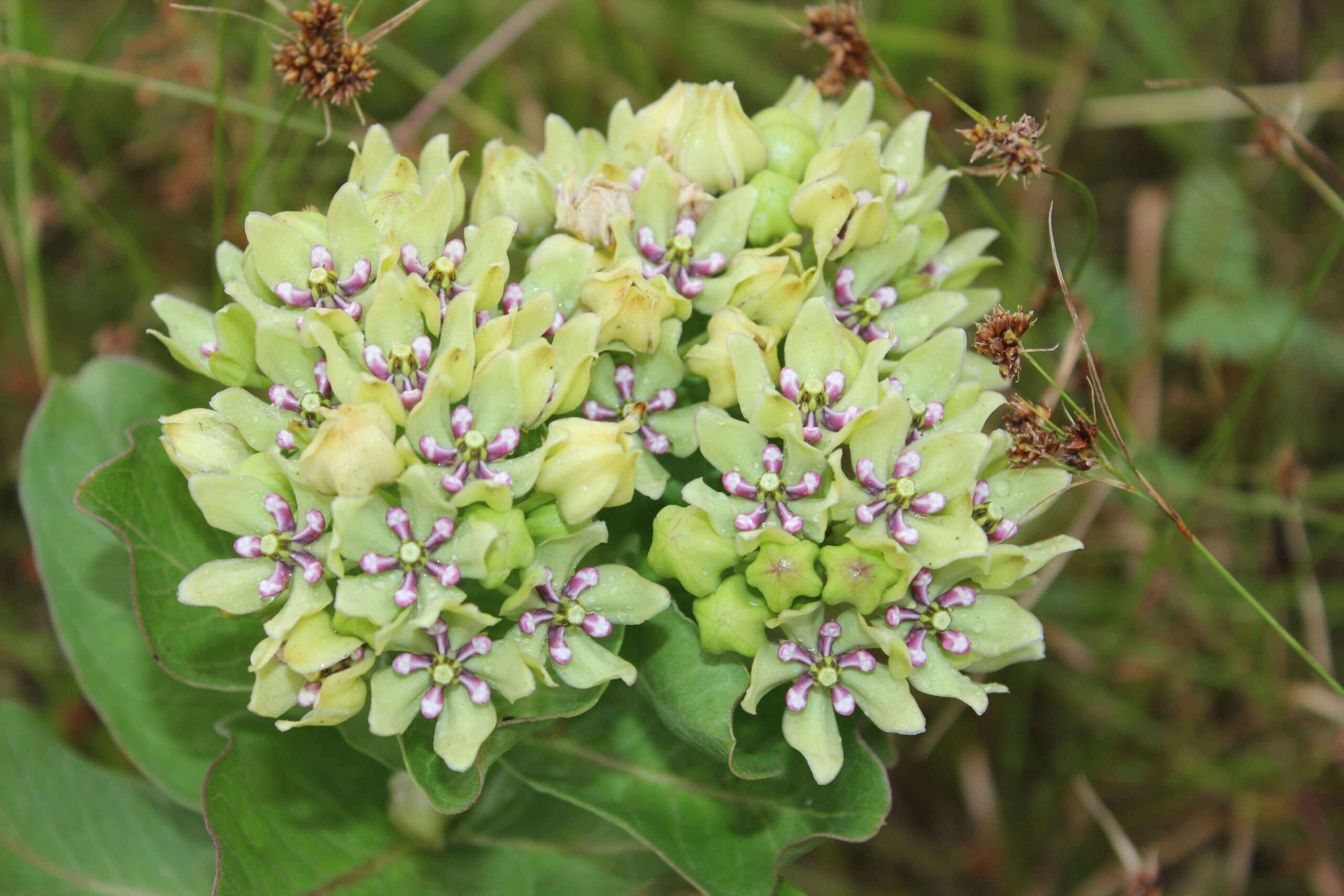
I’m going to call Asclepias asperula “Antelope Horns Milkweed”. Just that, and yes, it has many common names, but this is the one I hear for it most often across Texas, so this is what I’ll use. Furthermore, I choose to capitalize common names because I think it helps clear up confusion. One of the common names for Asclepias viridis is “Green Antelope Horns”. If I chose to use that and not capitalize it, just printing “green antelope horns”, you would no longer be able to tell if I meant Antelope Horns plants that are green at the time, or Green Antelope Horns plants.

What follows is an attempt to outline the distinguishing features of the two plants, to help you all tell them apart.
Shape
Green Milkweed (Asclepias viridis) The overall shape for a mature plant is multiple stems ascending into a V or vase shape from a central point. It grows taller in Texas than in Kansas, and I’ve seen some particularly happy plants that were over two feet tall.
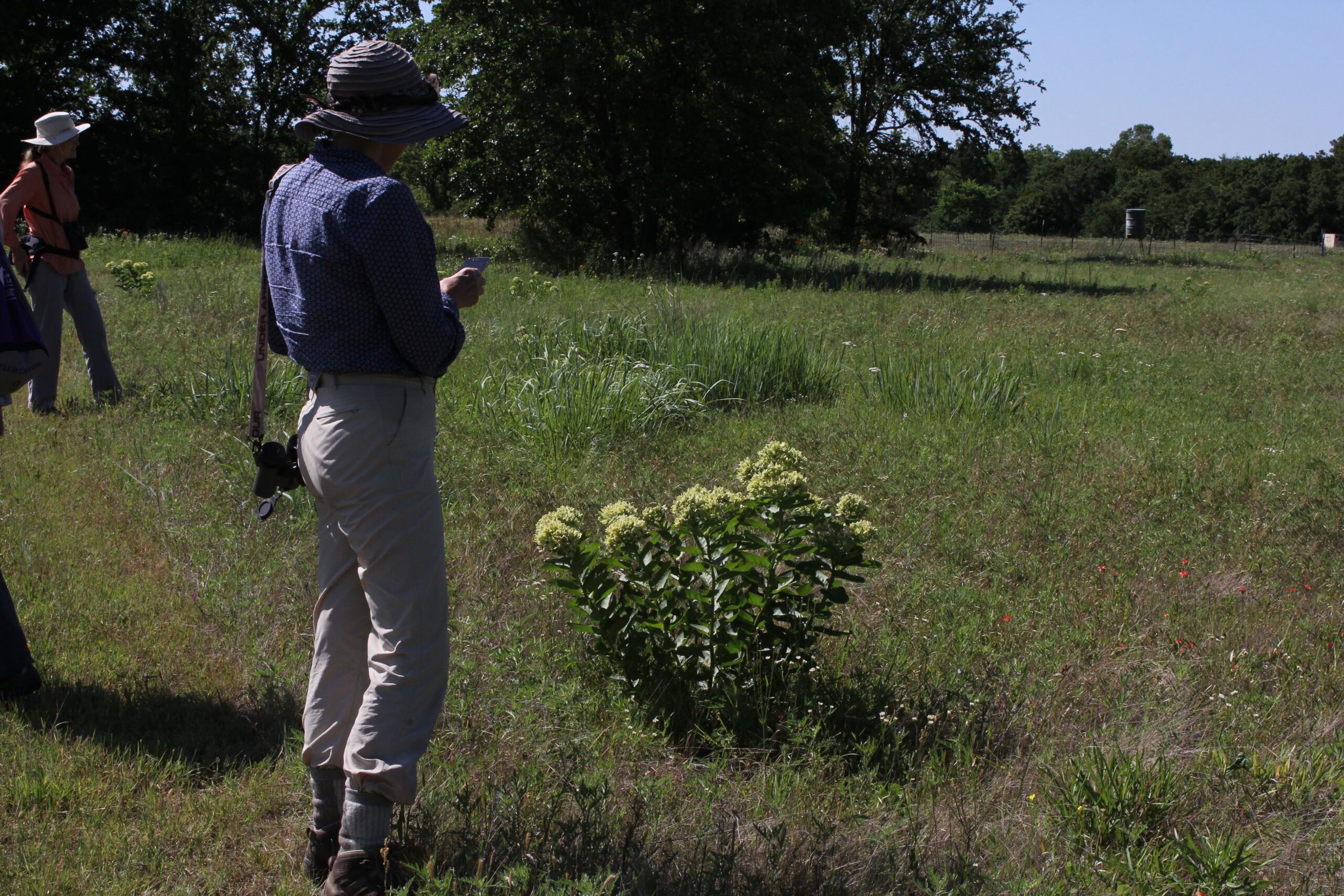
Antelope Horns Milkweed (Asclepias asperula) The overall shape for a mature plant in full sun is sprawling with multiple stems radiating out in a circle from a central point. Some lie very close to the ground, but those getting less than full sun may be a bit taller and more upright. Where they grow together, it is never as tall as Green Milkweed.
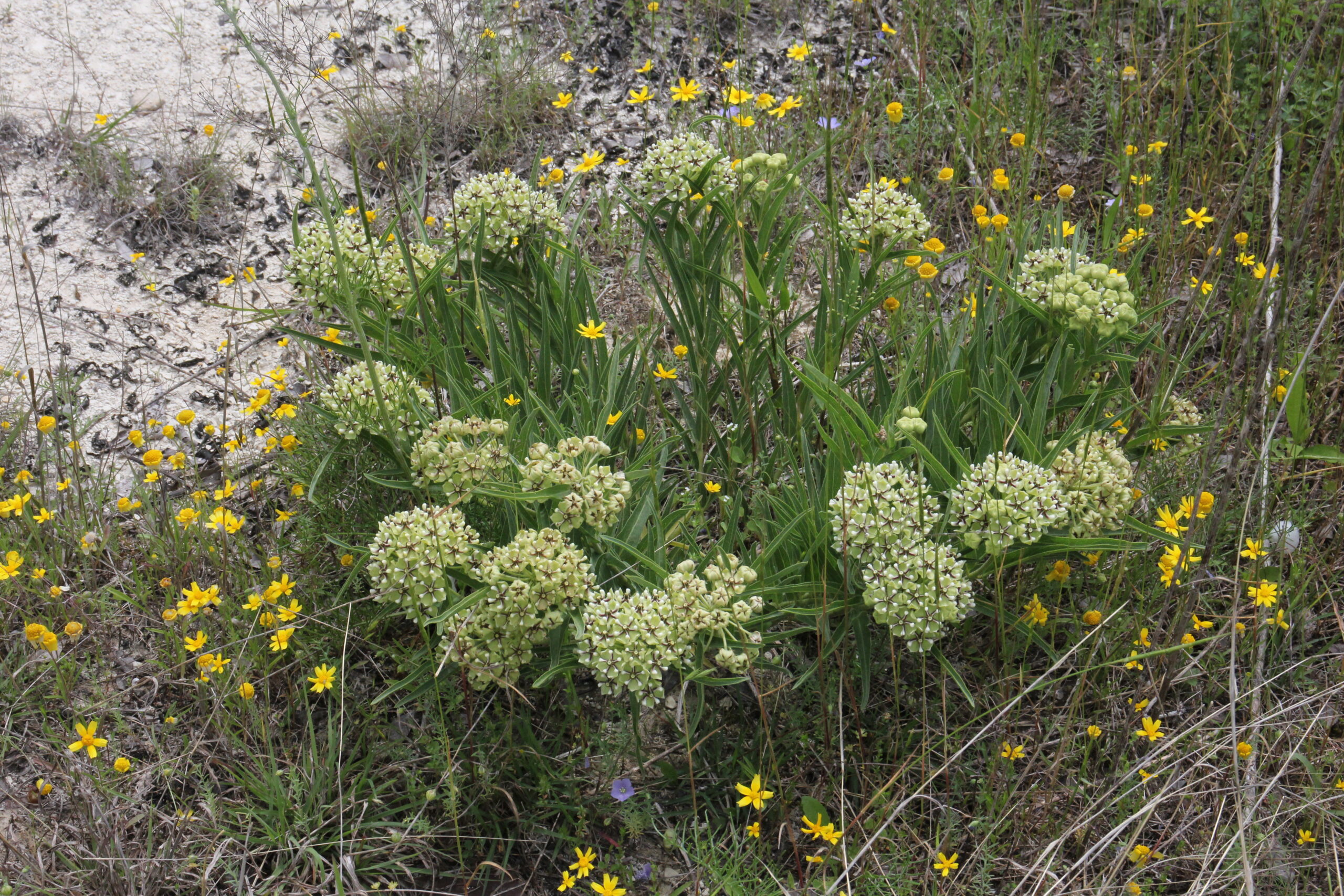
Roots
Both Asclepias viridis and Asclepias asperula have very similar long taproots, enabling both species to grow in the same spot for decades. They don’t spread via underground runners, and don’t form colonies.
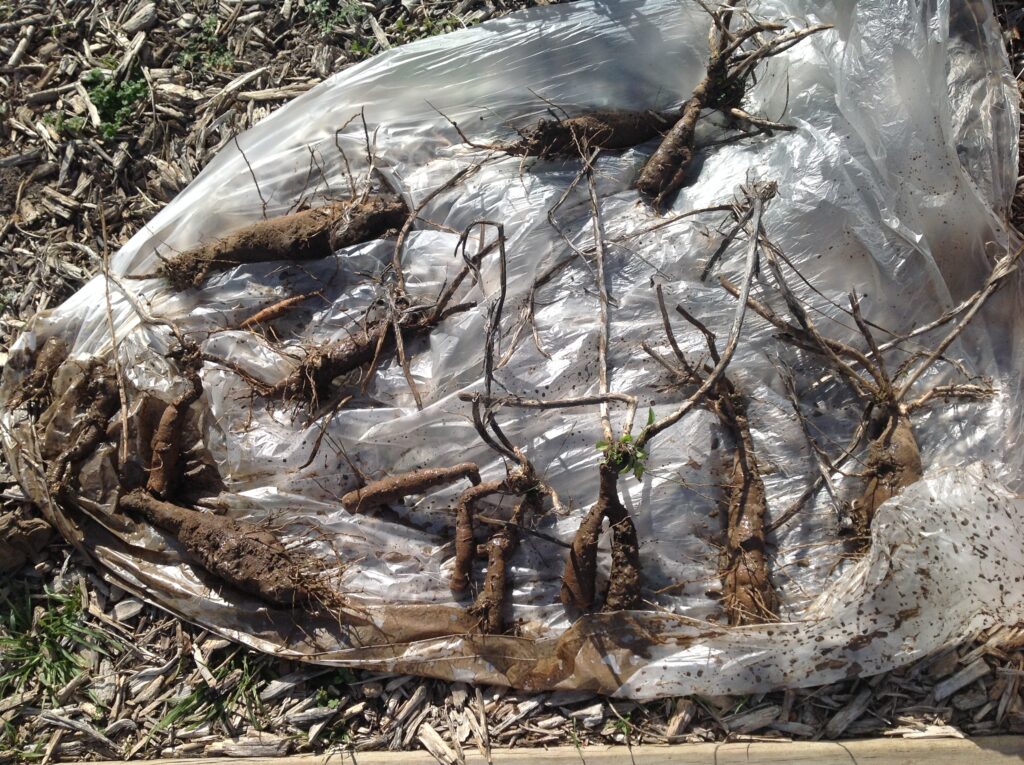
Leaves
Green Milkweed (Asclepias viridis) The leaves are usually blunt ovals in most of the eastern half of Texas. However, there is some leaf variation. Local populations and individuals in other populations may have considerably more narrow and pointed leaves that can make it resemble Antelope Horns Milkweed. Leaf shape is reliable if they are oval, but not if they are narrow and pointed. Leaves are randomly arranged, mostly alternate on the stem, but occasionally opposite. In person, the leaves are somewhat shiny and feel smooth and flexible. Under magnification, especially on new leaves, short soft hairs will show.

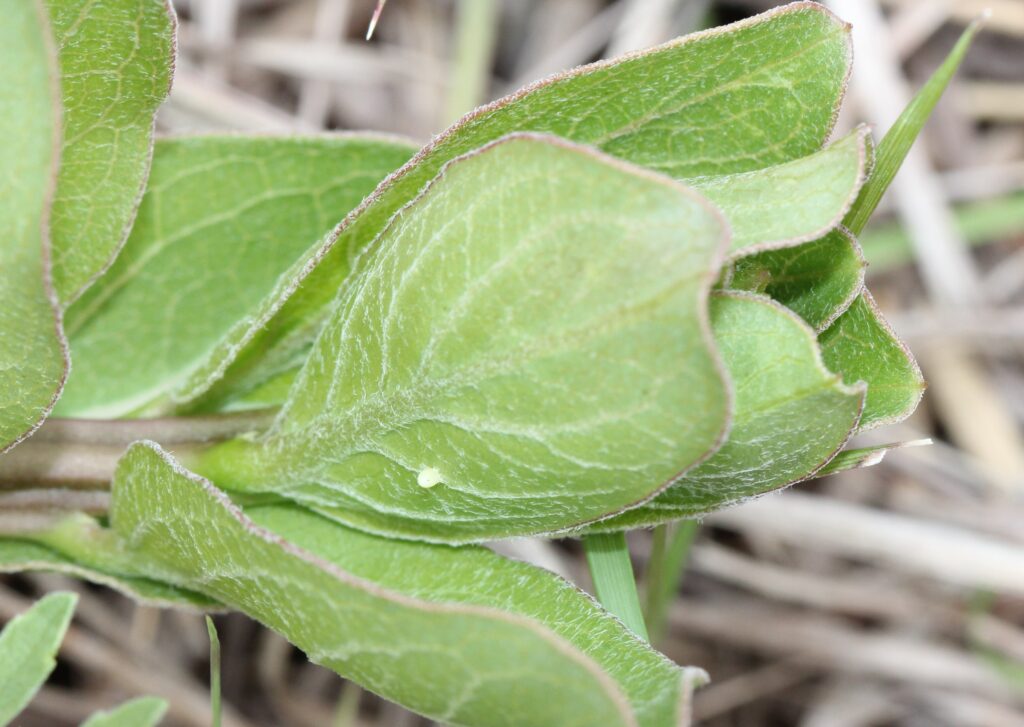
Antelope Horns Milkweed (Asclepias asperula) The leaves are always (watch someone find an exception now that I’ve said that!) lance shaped. They can be fairly narrow or very narrow, and always pointed at the tips. As far as I know, leaf variation is minimal, and Antelope Horns will not have wide oval leaves that resemble a typical Green Milkweed. Leaves are randomly arranged, mostly alternate on the stem, but occasionally opposite or even whorled. In person, the leaves have a matte finish to them, a stiff feel, and feel rough to the touch. Under magnification tiny nubs of fiber dot the leaves, but they are not as long or soft as the Green Milkweed fibers.
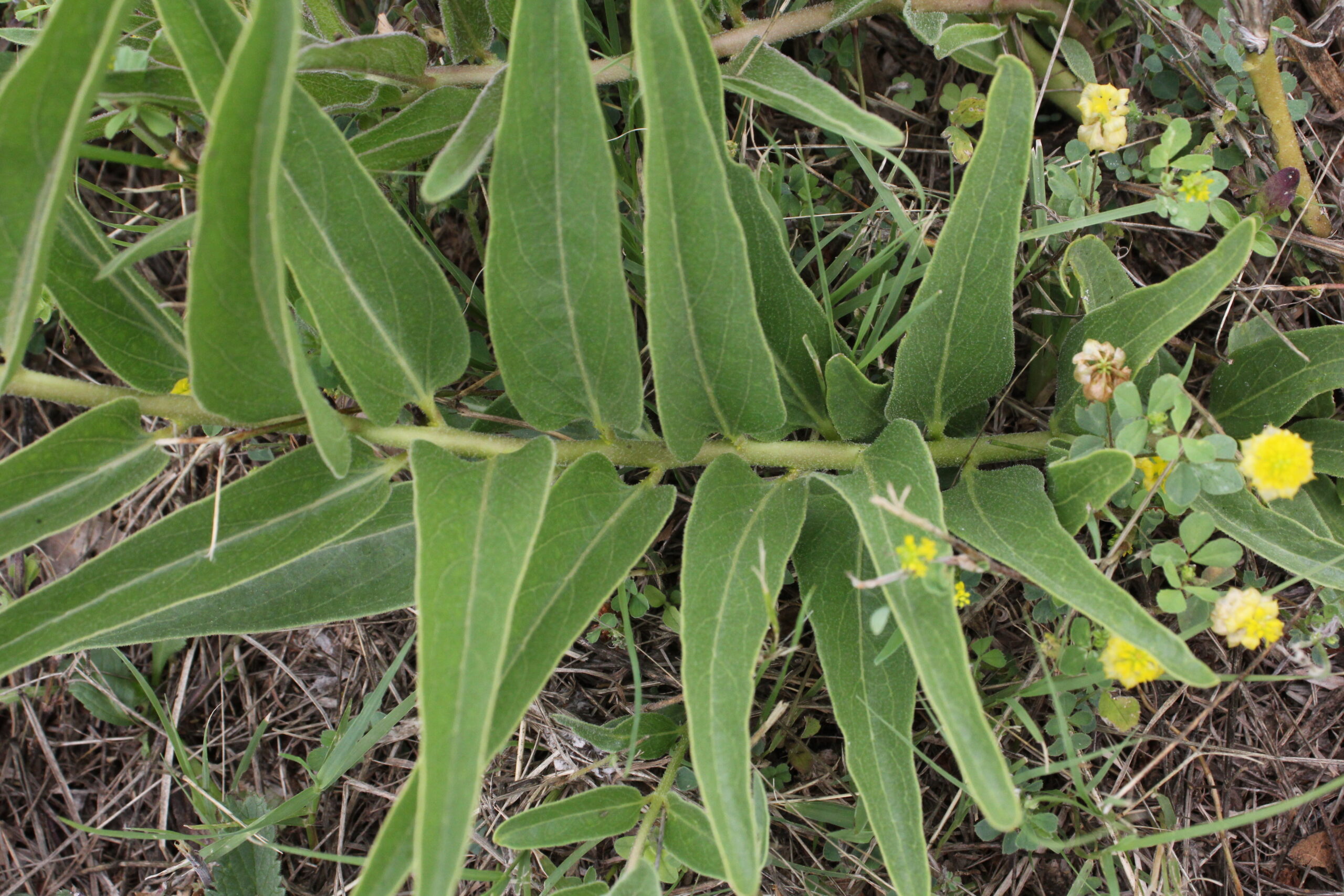
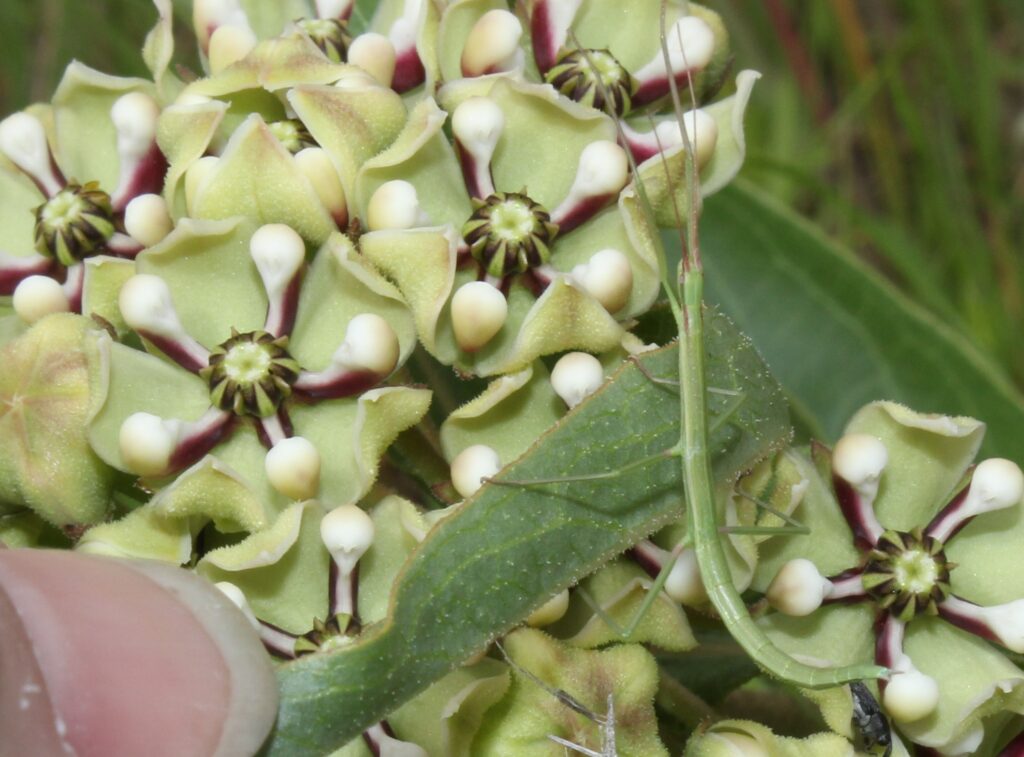
Buds
Green Milkweed (Asclepias viridis) The buds are inflated with five soft “ribs”, at least as tall as they are wide, and sort of balloon-like, with a rounded top. The buds are glossy. Just before they open, you may see a pentagonal hole at the center.
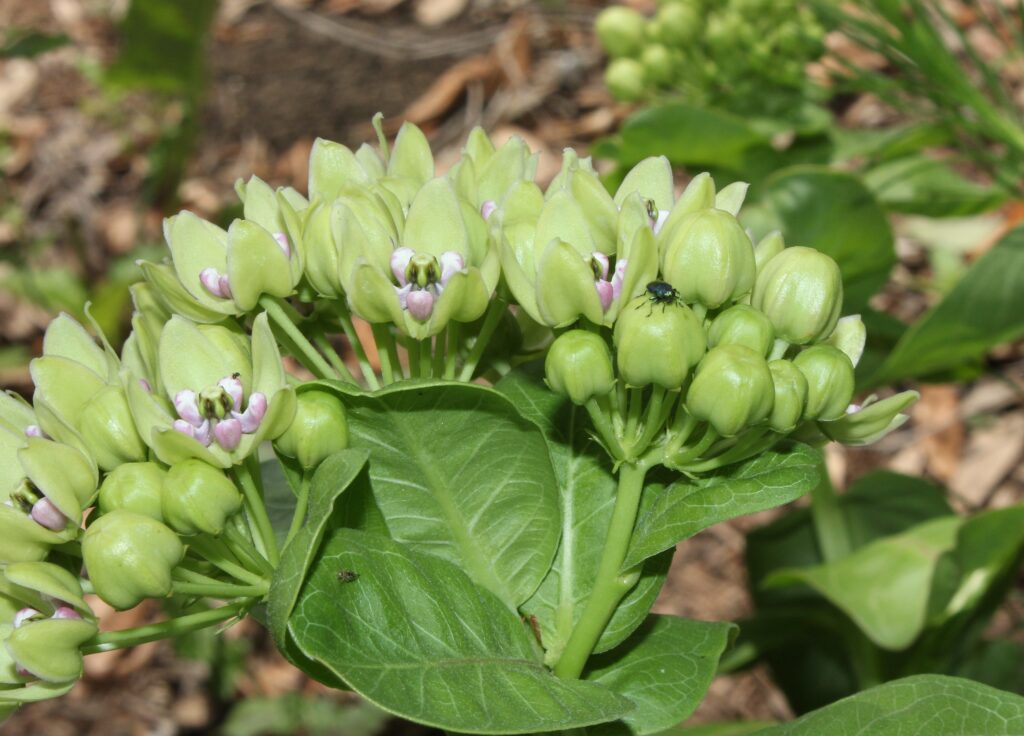
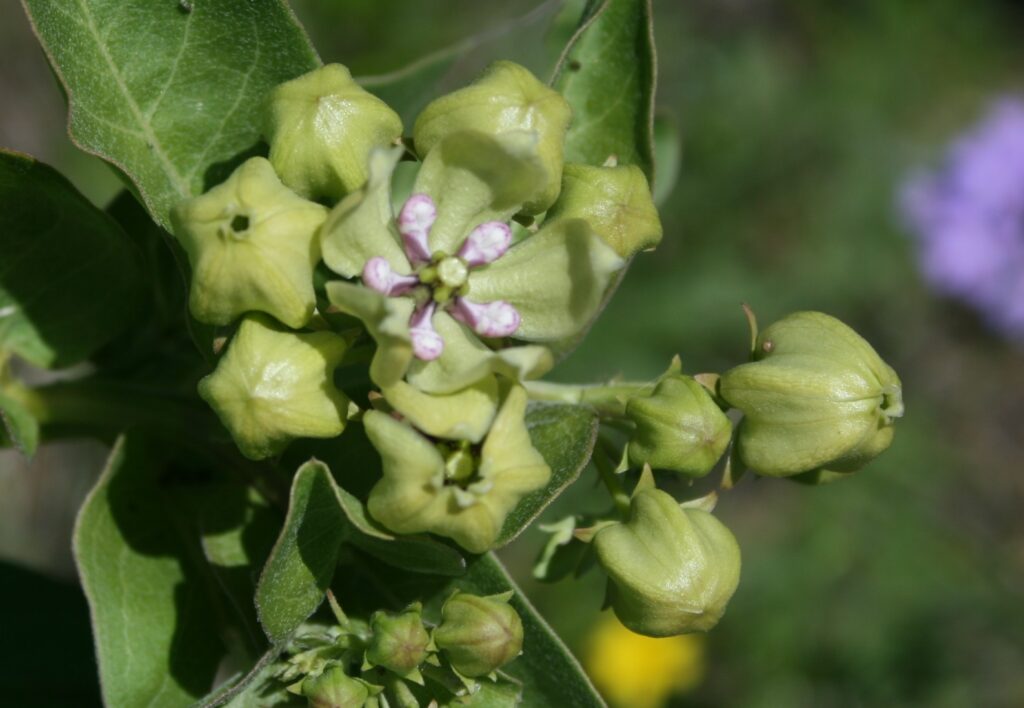
Antelope Horns Milkweed (Asclepias asperula) The buds are distinctly star shaped and flattened on the top. They are wider than they are tall, and do not have the inflated look of their cousin species. The buds have a pebbled matte finish, and just before they open, you may see five narrow slits radiating from the center on the top surface of the bud.

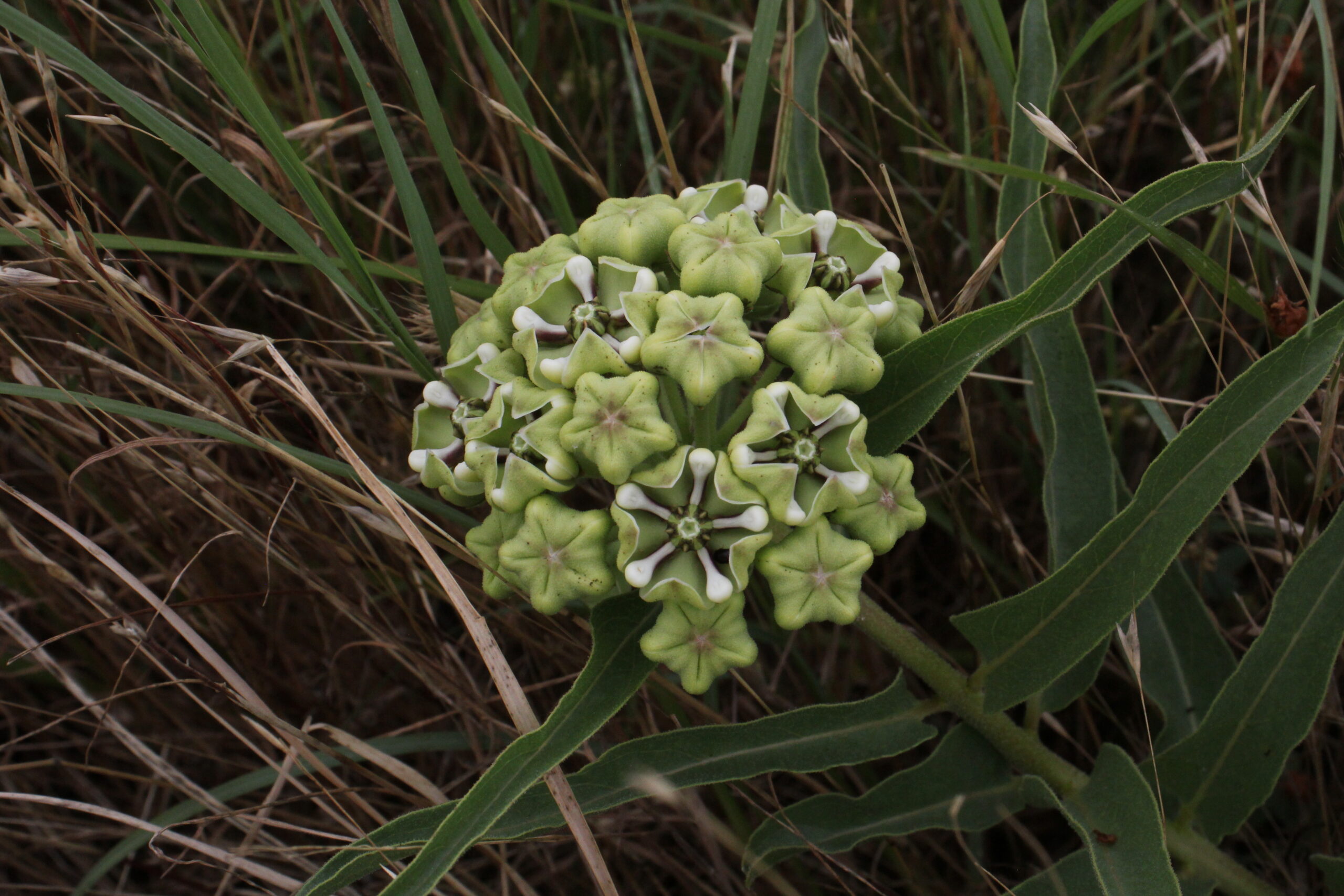
Flowers
Green Milkweed (Asclepias viridis) Flowers are held in loose irregularly shaped clusters with an overallcream, to yellow, to bright pale green coloration. The coloration of the petals and the placement of color on the “hoods” varies. The hoods that surround the center of the flower spread sideways before turning up, are lavender for most of their length, and may show lavender and white stripes towards their tips. Sometimes the bulbous tip of the hood is completely white, and other times it is lavender.The hoods do not extend as far as the edges of the circle made by the petals. They stop noticeably short of that perimeter.
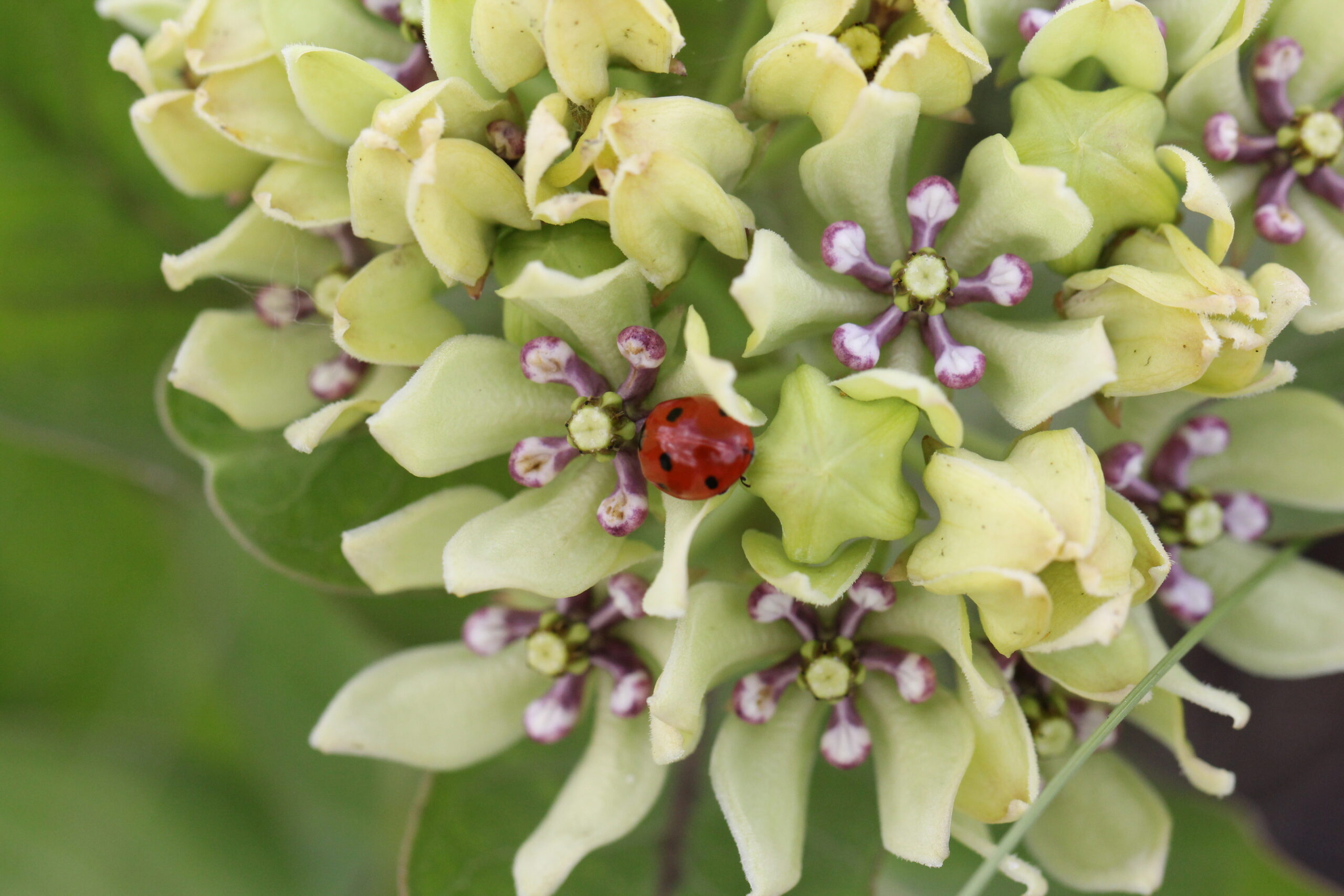
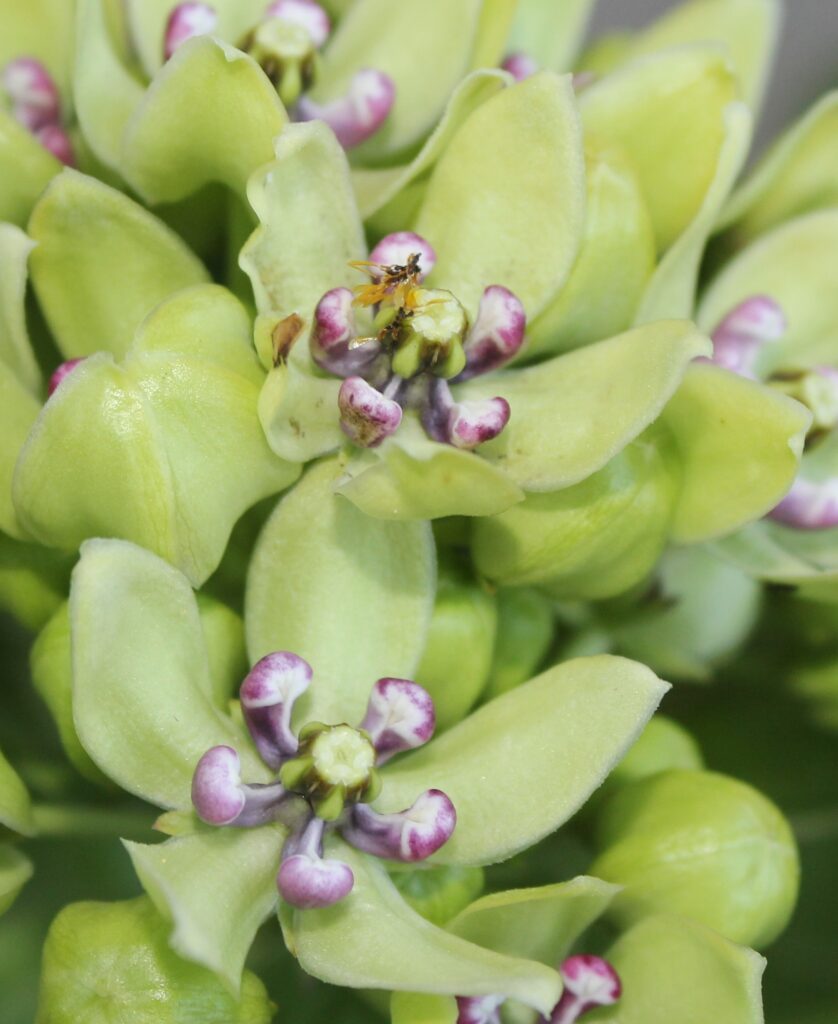
Antelope Horns Milkweed (Asclepias asperula) By contrast, flowers are held in very organized spherical or hemispherical clusters—so organized that the flowers fit closely together and the overall effect is a 3-D tessellated shape. Coloration of the petals is again from cream through yellow to light green. The hoods around the center of the flower spread wider and flatter than those of the Green Milkweed. Their tips extend all the way to the edge of the circle made by the open petals. The hood coloration is maroon and white, typically with less colored area than the Green Milkweed hoods.
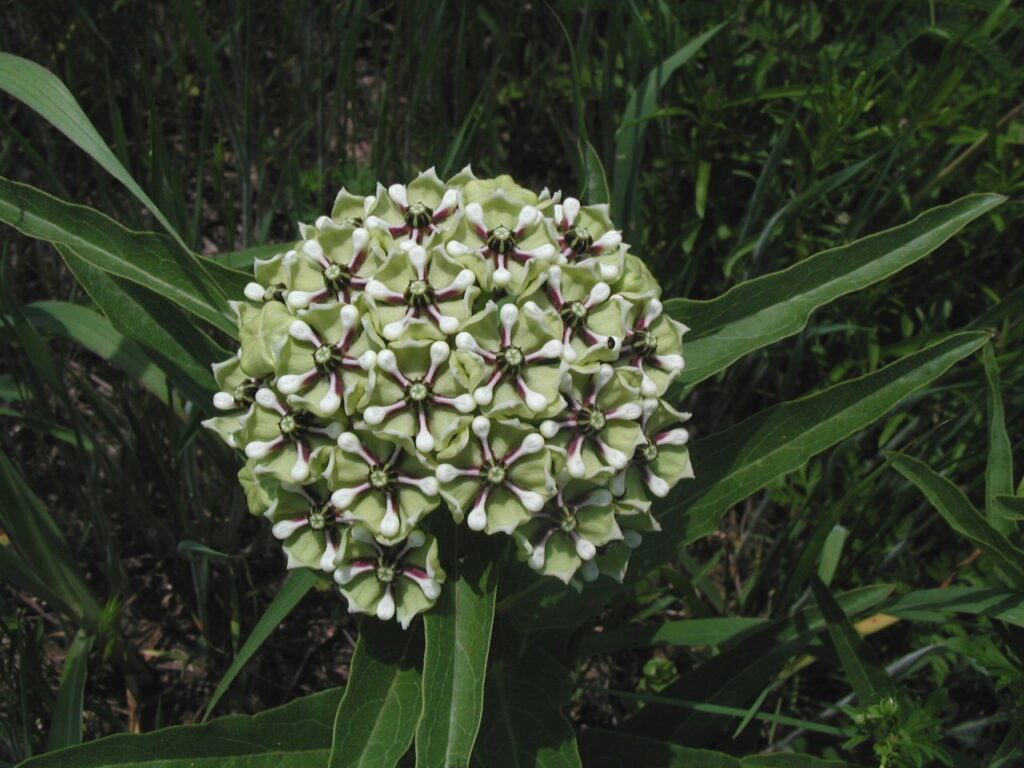
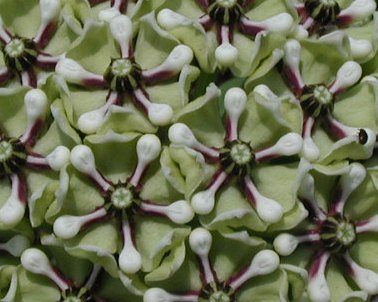
In your location, you may see color combinations in the flowers of both species that make you wonder which they are, but the shape of the flowers and flower clusters and the position of the hoods should still tell them apart.
Habitat and Range
Green Milkweed (Asclepias viridis) This plant is fairly flexible in its soil and moisture needs, growing in sandy soils, well-drained rocky soils and deep moisture holding clay soils. It grows in drainage ditches that flood occasionally and also in shallow poor soils over cracked chalk rock. Typically, it is happiest out in a pasture or in a prairie in full sun, but it will even tolerate part shade. It will bloom best with plenty of sun. It grows tall enough to coexist with taller prairie grasses. Its range includes most of the eastern two thirds of Texas

Antelope Horns Milkweed (Asclepias asperula) This plant is considerably fussier about light and moisture in my experience. It really prefers a hot full sun location with well drained soils. Out in the wild in North Central Texas, I find it most often on very well drained sites, frequently growing right out of cracked chalk rock or very shallow soils over rock. Rich moisture holding soils and “wet feet” over the cold winter may cause this plant to decline or die. Its lower growth habit makes it ideal for low competition sites, where the soil and moisture conditions don’t allow larger grasses and plants to thrive. Its range includes most of the western two thirds of Texas.with extensions into some eastern areas as well.
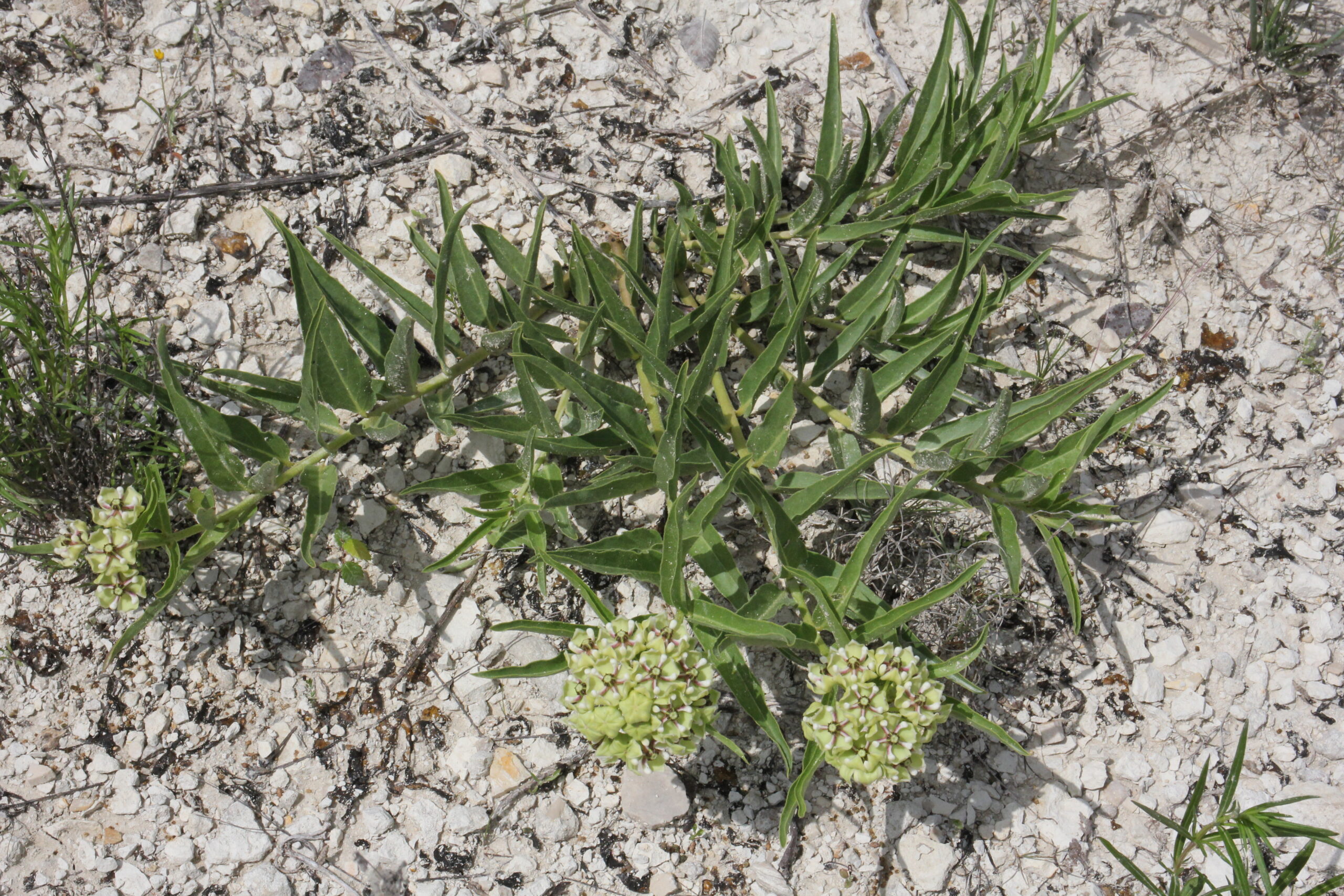
It’s not uncommon to find both milkweeds within a few feet of each other on a prairie or pasture site in North Central Texas where their ranges overlap.
Pods
Both species make similar seedpods (follicles) with variable surface textures, so pods alone are not good distinguishing features.
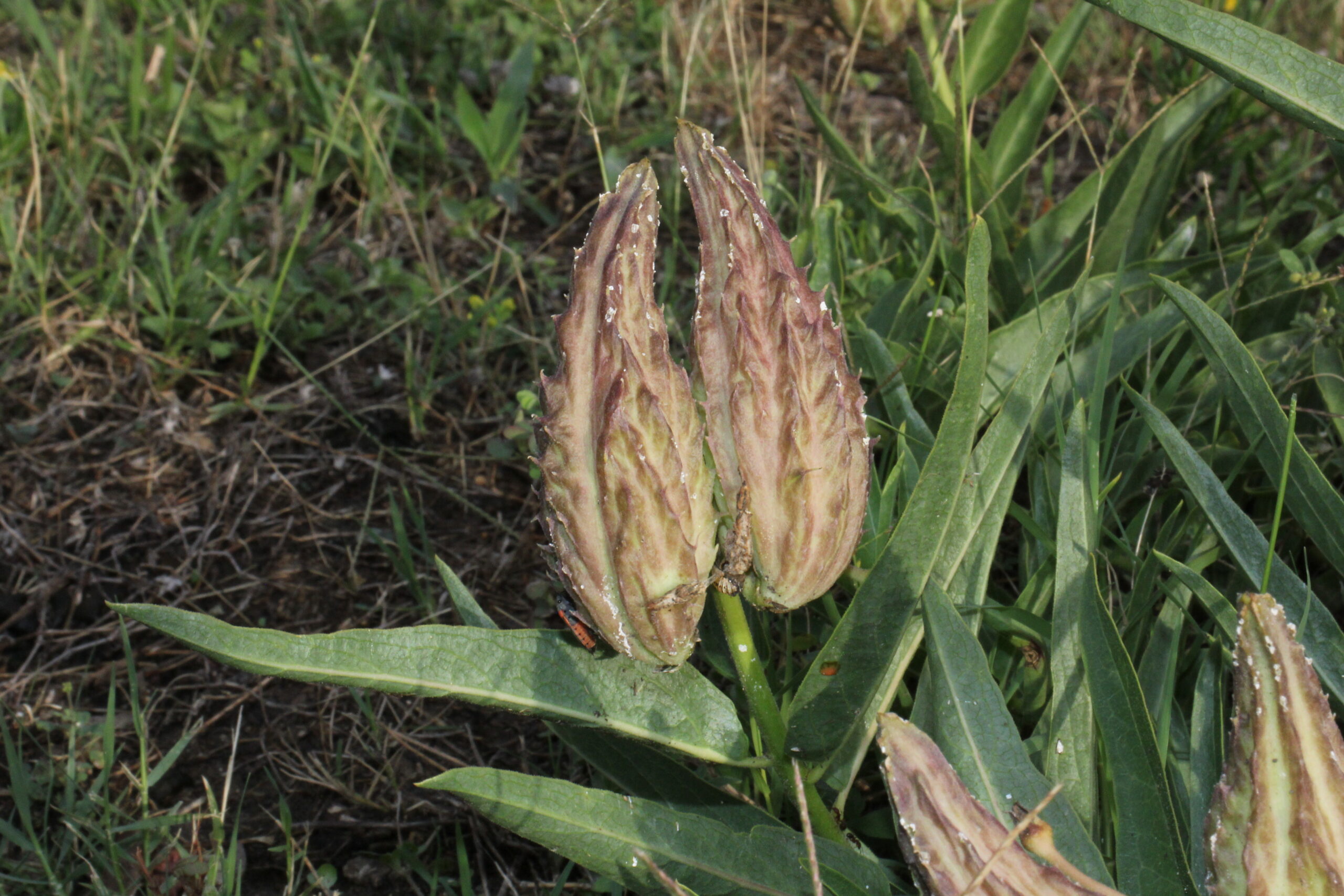
Hybrids
Rarely, you may find a plant with characteristics of both species, and hybrids are thought to exist but occur only rarely. Of the many thousands of plants I’ve inspected, only a handful ever seemed like they could be hybrids.
By now you’re ready to pull out your old photos and figure out which of these two wonderful plants you saw. No more mystery and confusion, right?
